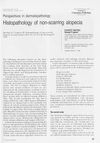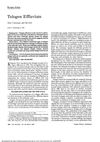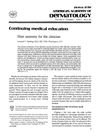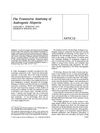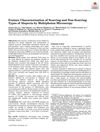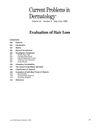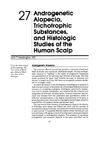The Histopathology of Noncicatricial Alopecia
March 2006
in “
Seminars in Cutaneous Medicine and Surgery
”
androgenetic alopecia telogen effluvium alopecia areata trichotillomania chronic traction alopecia follicle miniaturization catagen follicles telogen follicles peribulbar lymphocytes hair pulling disrupted follicular architecture reduced terminal follicles pattern baldness stress-induced hair loss autoimmune hair loss hair-pulling disorder traction hair loss

TLDR Different types of hair loss have unique features under a microscope, but a doctor's exam is important for accurate diagnosis.
The 2006 document reviews the histopathologic characteristics of four types of noncicatricial alopecia: androgenetic alopecia, telogen effluvium, alopecia areata, and trichotillomania/chronic traction alopecia. It highlights the necessity of clinical correlation for diagnosis due to overlapping histopathological features and the benefits of using transverse sections in scalp biopsies. Androgenetic alopecia shows follicle miniaturization, telogen effluvium has an increased number of catagen or telogen follicles, alopecia areata is marked by peribulbar lymphocytes, and trichotillomania exhibits signs of hair pulling. The document also details the histopathologic changes in the active, inactive, and regrowth phases of alopecia areata, as well as the similarities between trichotillomania and chronic traction alopecia, such as disrupted follicular architecture and reduced terminal follicles. It acknowledges Dr. John T. Headington's work and the diagnostic value of transverse sections.



